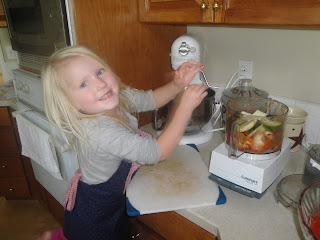To be provident means to plan with the future in mind.
It is
not just about food storage. Living these principles prepares us to be of
better service to our Father in Heaven. If the choices we make today relieve
stress tomorrow or in the future, then we are much more capable of reaching out
and serving those around us.
Learning skills and getting good at doing things
builds confidence which also makes us more able to serve. These principles are
so important for us as adults to learn, but also for us to teach to our
children. Here is a list to get you thinking about what you could do with your children to teach them some of these priniciples.
.jpg)
Think: Basic Skills
Perfect for Activity Days and Cub Scouts or Young Men and Young Women
But also great for summer fun or FHE at your own home with kids or grandkids!
1. Bread making or pizza dough from scratch.
2. Make pancakes, cupcakes, cookies, or no-bake items from scratch,
instead of a mix.
3. Make lasagna, manicotti, or baked ziti. Make a couple of extra
batches to share with new moms in your ward that they can freeze and use when
needed. Choose a different freezer meal, if desired
4. Have a baking talent show
complete with judges. Youth bring items they have baked as entries.
5. Create a recipe collection of simple, easy to make recipes that
youth can take with them on missions or to college. These recipes should be
from scratch using basic ingredients available in all countries. This could be
something done over a few months. Each month, one or two youth could teach how
to make a certain item and the class could include it in their books. These
need to be main dish items, not just desserts.
6. Teach basic laundry techniques. Create a game out of seeing how
quickly they can sort the clothes into loads. Teach how to do laundry at a
laundry mat or in a bin full of water knowing that many will serve missions
where washing machines are not available.
7. Basic sewing skills can be taught. How to sew on a button,
repair a seam, hem some pants, etc. This could be done in stations at an MTC
night. Include some basic cooking, cleaning, ironing, and laundry stations in
the rotation.
8. Sew quilt squares together to make a humanitarian quilt or tie a
quilt already put together.
9. Sew aprons out of dishtowels or scripture totes out of
placemats.
10. Sew simple skirts with elastic waistbands or PJ shorts.
11. Learn basic car, bike, or home repairs.
12. Create a sample budget for meals for 1 week for 1 person. See
if you can come up with nutritious meals for $30 or less. This is a good limit
to set when serving a mission or in
college. It is possible!
13. Have a financial discussion showing what happens when you take
out a loan or use a credit card. Perhaps invite a special speaker. Discuss
creative ways to get through college without any debt and why that would be
such a blessing.
14. Have a career night. Talk about what a minimum wage job will
allow you to have in life. Talk about what the minimum salary is to be able to
pay tithing and have a basic home, proper insurances, a reliable car, buy
groceries, etc. Then invite members of your ward to talk about what they do and
what the expected salaries are in their fields.
15. Build basic 72-hour kits for youth to take with them to
college.
16. Put together backpacking food for high adventure. Young men can
help dehydrate snacks or price check pre-made meals compared to inexpensive
alternatives from the regular grocery store.
17. Repair or clean camping supplies after the big event, including
seasoning the Dutch ovens.
18. Have the youth plan meals and rotate through cooking and
cleaning assignments at camp. Some of them can be paired with leaders to help
purchase items and stay within the budget.
Remember that it takes a little more time and planning to teach the
youth these skills instead of just doing it for them, but they will be better
off their whole life through because of the lessons learned!
